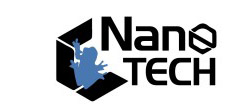EQUASET: Fabrication and Characterization of symmetry-engineered and twisted nanomaterials for the study fo emergent quantum phenomena (PID222-136285NB-C32)
Abstract:
The EQUASET project will focus on the study of disruptive nanomaterials that can be symmetry-engineered and/or twisted, where emergent quantum phenomena manifest themselves through their unconventional charge and/or spin transport as well as spin-light interactions properties. Essential ingredients of the underlying physics are broken-symmetry, chirality and topology. Nevertheless, the theoretical underpinning of topological and chiral spintronic materials is still being developed and understood. The project includes both experimental and theoretical aspects, closely linked as we will describe in this proposal.A key requirement of our proposal, encompassing a range of disciplines, is to ensure that the three subprojects are closely interconnected, and thus directly complement each other and the strategic goals. As outlined in detail later in the proposal, we will mainly achieve this through (i) tight interaction among team members, (ii) the principal investigators (PIs), who are a priori familiar with each other and known for their interdisciplinary approaches to research, (iii) a detailed training program aimed to ensure that the cohort of PhD students progresses as one unit, and (iv) an experienced and well-structured management.Our proposal benefits from the synergy between different groups with complementary scientific profiles. These groups have a history of sustained and fruitful long-term collaboration. In recent years, the Quantum Nanosystems Group (QNG, www.qng.es) of the Universidad Complutense de Madrid (UCM), in collaboration with Instituto de Estructura de la Materia from CSIC (IEM, www.iem.csic.es), have made proposals for the development of nanodevices (transistors and resonant spin filters among others) based on nanostructures made of topological materials. However, models and subsequent simulations need experimental verification to improve them. This is where the justification for collaboration with the Nanotechnology Group (NANOTECH, nanotech.usal.es) of the Universidad de Salamanca (USAL) becomes apparent. The group members have experience and resources to experimentally manufacture and characterize the nanodevices discussed in this proposal. In addition to their own resources, such as a fully equipped Clean Room, they maintain close collaboration with other European laboratories (European Magnetic Field Laboratory-EMFL at Nijmegen, Toulouse and Grenoble, Iberian Nanotechnology Laboratory, CENTERA, Pavia and Cambridge Universities). We also maintain close collaboration with several experimental groups overseas, but let us stress a recent but very fruitful scientific relation with Prof. Hamilton from UNSW at Sydney and closely related to one of the objectives of this project. This opens the door for members of the UCM+IEM to collaborate also with these laboratories. We detail below the strengths of the research teams.Our most recent research proposals have also aimed to expand our research interest in the field of nano-optoelectronics. The group’s knowhow in this area was reinforced by the involvement of Jorge Quereda, first (2019) as a team member at NANOTECH (Juan de la Cierva) and later (2022) at QNG (Marie Curie-COFUND). Jorge Quereda has recently been selected for a permanent position (Científico Titular) at Instituto de Ciencia de Materiales de Madrid from CSIC (ICMM, www.icmm.csic.es). His participation in the consortium as PI of subproject 3 will ensure that our team maintains a strong expertise in nano- optoelectronics, necessary for the successful outcome of this project.
Funding_entity: MINISTERIO DE CIENCIA, INNOVACIÓN Y UNIVERSIDADES
Period: 2023-2027
Principal investigator and Coordinator: MARIO AMADO MONTERO Y ENRIQUE DIEZ FERNÁNDEZ
Publications:
Spin-Resolved Magneto-Tunneling and Giant Anisotropic g‑Factor in Broken Gap InAs-GaSb Core−Shell Nanowires
Nano Letters 24 (3) 790−796 (2024) (2024)


